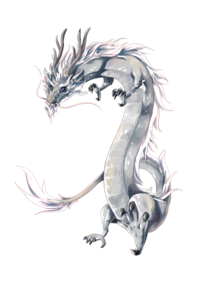The sun has gone blank
+2
Solace
Rogue
6 posters
Page 1 of 1
 The sun has gone blank
The sun has gone blank
The sun has gone blank twice this month. This is what it means
JUNE 29, 20165:16PM
YOU may not have noticed but our sun has gone as blank as a cue ball. As in, it’s lost its spots.
According to scientists, this unsettling phenomenon is a sign we are heading for a mini ice age.
Meteorologist and renowned sun-watcher Paul Dorian raised the alarm in his latest report, which has sparked a mild panic about an impending Game of Thrones-style winter not seen since the 17th century.
“For the second time this month, the sun has gone completely blank,” Mr Dorian says.
“The blank sun is a sign that the next solar minimum is approaching and there will be an increasing number of spotless days over the next few years.
“At first, the blankness will stretch for just a few days at a time, then it’ll continue for weeks at a time, and finally it should last for months at a time when the sunspot cycle reaches its nadir. The next solar minimum phase is expected to take place around 2019 or 2020.”
According to NASA, the sun goes through a natural solar cycle approximately every 11 years. The cycle is marked by the increase and decrease of sunspots — visible as dark blemishes on the sun’s surface, or photosphere. The greatest number of sunspots in any given solar cycle is designated as “solar maximum.” The lowest number is “solar minimum”.
“During Solar Max, huge sunspots and intense solar flares are a daily occurrence. Auroras appear in Florida. Radiation storms knock out satellites. Radio blackouts frustrate CB radio as well. The last such episode took place in the years around 2000-2001,” the space agency’s website
“During solar minimum, the opposite occurs. Solar flares are almost non-existent while whole weeks go by without a single, tiny sunspot to break the monotony of the blank sun. This is what we are experiencing now.”
Given that the sun is the main driver of all weather and climate, the sinister-sounding “blankness” to which Mr Dorian refers has some experts predicting a “Maunder Minimum” phase similar to one which began in 1645 and which is referred to as the “Little Ice Age”.
The Maunder Minimum, named after solar astronomer Edward Maunder, lasted for a brutal 70 years and was so cold the Thames froze over.
A slightly less intense ice age-like period called the Dalton Minimum — after British Meteorologist John Dalton — arrived decades later and lasted from about 1790 to 1830.
“If history is any guide, it is safe to say that weak solar activity for a prolonged period of time can have a cooling impact on global temperatures in the troposphere which is the bottommost layer of Earth’s atmosphere — and where we all live,” Mr Dorian says.
Mr Dorian’s findings back research by professor Valentina Zharkova of Northumbria University, who warned that a predicted sharp decline in solar activity between 2020 and 2050 was a sign another ice age was coming.
“I am absolutely confident in our research,” Prof Zharkova said.
“It has good mathematical background and reliable data, which has been handled correctly. In fact, our results can be repeated by any researchers with the similar data available in many solar observatories, so they can derive their own evidence of upcoming Maunder Minimum in solar magnetic field and activity.”
And there are other consequences of a sun without spots. Not least for astronauts who face the risk of having their DNA “shattered” by cosmic rays, whose potency surges during periods of solar weakness.
According to Mr Dorian, cosmic rays surge into the inner solar system “with relative ease” during periods of solar minimum.
“Solar wind decreases and sun’s magnetic field weakens during solar minimums making it easier for cosmic rays to reach the Earth,” he explains.
“This is a more dangerous time for astronauts as the increase in potent cosmic rays can easily shatter a strand of human DNA. Also, during years of lower sunspot number, the sun’s extreme ultraviolet radiation (EUV) drops and the Earth’s upper atmosphere cools and contracts.
“With sharply lower aerodynamic drag, satellites have less trouble staying in orbit — a good thing. On the other hand, space junk tends to accumulate, making the space around Earth a more dangerous place place for astronauts.”
this-is-what-it-means/news-story/d775ecf894ab68415ed0108ced31a4e2
JUNE 29, 20165:16PM
YOU may not have noticed but our sun has gone as blank as a cue ball. As in, it’s lost its spots.
According to scientists, this unsettling phenomenon is a sign we are heading for a mini ice age.
Meteorologist and renowned sun-watcher Paul Dorian raised the alarm in his latest report, which has sparked a mild panic about an impending Game of Thrones-style winter not seen since the 17th century.
“For the second time this month, the sun has gone completely blank,” Mr Dorian says.
“The blank sun is a sign that the next solar minimum is approaching and there will be an increasing number of spotless days over the next few years.
“At first, the blankness will stretch for just a few days at a time, then it’ll continue for weeks at a time, and finally it should last for months at a time when the sunspot cycle reaches its nadir. The next solar minimum phase is expected to take place around 2019 or 2020.”
According to NASA, the sun goes through a natural solar cycle approximately every 11 years. The cycle is marked by the increase and decrease of sunspots — visible as dark blemishes on the sun’s surface, or photosphere. The greatest number of sunspots in any given solar cycle is designated as “solar maximum.” The lowest number is “solar minimum”.
“During Solar Max, huge sunspots and intense solar flares are a daily occurrence. Auroras appear in Florida. Radiation storms knock out satellites. Radio blackouts frustrate CB radio as well. The last such episode took place in the years around 2000-2001,” the space agency’s website
“During solar minimum, the opposite occurs. Solar flares are almost non-existent while whole weeks go by without a single, tiny sunspot to break the monotony of the blank sun. This is what we are experiencing now.”
Given that the sun is the main driver of all weather and climate, the sinister-sounding “blankness” to which Mr Dorian refers has some experts predicting a “Maunder Minimum” phase similar to one which began in 1645 and which is referred to as the “Little Ice Age”.
The Maunder Minimum, named after solar astronomer Edward Maunder, lasted for a brutal 70 years and was so cold the Thames froze over.
A slightly less intense ice age-like period called the Dalton Minimum — after British Meteorologist John Dalton — arrived decades later and lasted from about 1790 to 1830.
“If history is any guide, it is safe to say that weak solar activity for a prolonged period of time can have a cooling impact on global temperatures in the troposphere which is the bottommost layer of Earth’s atmosphere — and where we all live,” Mr Dorian says.
Mr Dorian’s findings back research by professor Valentina Zharkova of Northumbria University, who warned that a predicted sharp decline in solar activity between 2020 and 2050 was a sign another ice age was coming.
“I am absolutely confident in our research,” Prof Zharkova said.
“It has good mathematical background and reliable data, which has been handled correctly. In fact, our results can be repeated by any researchers with the similar data available in many solar observatories, so they can derive their own evidence of upcoming Maunder Minimum in solar magnetic field and activity.”
And there are other consequences of a sun without spots. Not least for astronauts who face the risk of having their DNA “shattered” by cosmic rays, whose potency surges during periods of solar weakness.
According to Mr Dorian, cosmic rays surge into the inner solar system “with relative ease” during periods of solar minimum.
“Solar wind decreases and sun’s magnetic field weakens during solar minimums making it easier for cosmic rays to reach the Earth,” he explains.
“This is a more dangerous time for astronauts as the increase in potent cosmic rays can easily shatter a strand of human DNA. Also, during years of lower sunspot number, the sun’s extreme ultraviolet radiation (EUV) drops and the Earth’s upper atmosphere cools and contracts.
“With sharply lower aerodynamic drag, satellites have less trouble staying in orbit — a good thing. On the other hand, space junk tends to accumulate, making the space around Earth a more dangerous place place for astronauts.”
this-is-what-it-means/news-story/d775ecf894ab68415ed0108ced31a4e2

Rogue- Posts : 37277
Join date : 2014-06-12
Location : Next to the Sandgroper
 Re: The sun has gone blank
Re: The sun has gone blank
Pardon the pun, but "cool" share Rogue! (albeit unsettling!  )
)

Solace- Posts : 4337
Join date : 2014-06-13
Location : Within the music...
 Re: The sun has gone blank
Re: The sun has gone blank
Interesting... I wonder if it will be enough to counteract global warming or if it will intensify more than just winters *ponders*

Kaere- Posts : 31049
Join date : 2014-06-09
 Re: The sun has gone blank
Re: The sun has gone blank
I was just wondering the same (counteracting global warming and a win for polar bears "hopefully"..ie. more sea ice)

Solace- Posts : 4337
Join date : 2014-06-13
Location : Within the music...

Solace- Posts : 4337
Join date : 2014-06-13
Location : Within the music...
 Re: The sun has gone blank
Re: The sun has gone blank
This change every 11yrs huh? then why have we not turned to a "ice age" the past few cycles?

Lenzabi- Admin
- Posts : 2447
Join date : 2014-06-11
Age : 60
Location : Earth
 Re: The sun has gone blank
Re: The sun has gone blank
I think it's because each cycle is not exactly the same... the variation in sunspots can be greater or lesser. Going to having no sunspots at all is not very usual as far as I have read. Perhaps just one cycle where there are no sunspots might not make much of a difference, but if it happens for two or three cycles in a row, that could be the clincher. Like on a swing, you don't always go up as high as possible each time, sometimes you swing gently, sometimes not.
Just my thoughts on it.
Just my thoughts on it.

Kaere- Posts : 31049
Join date : 2014-06-09
 Re: The sun has gone blank
Re: The sun has gone blank
That is my understanding from the article Kaere as well. A maximum minimum is not so common. I also wondered if it would have the affect of putting the brakes on global warming for a period.

Rogue- Posts : 37277
Join date : 2014-06-12
Location : Next to the Sandgroper
 Re: The sun has gone blank
Re: The sun has gone blank
Very interesting! The last Maunder minimum lasted 70 years and I personally wouldn't mind if it happens again to restore the Arctic.

Agartha- Admin
- Posts : 28871
Join date : 2014-06-10
Location : Behind you.
 Re: The sun has gone blank
Re: The sun has gone blank
The only thing I can think of that would concern me is if the growing season in certain places would be shortened. It could put quite a bit of strain on food production.

Kaere- Posts : 31049
Join date : 2014-06-09
 Re: The sun has gone blank
Re: The sun has gone blank
True, it would probably affect the Northern lattitudes more.....

Agartha- Admin
- Posts : 28871
Join date : 2014-06-10
Location : Behind you.
 Re: The sun has gone blank
Re: The sun has gone blank
Don't forget, there has been a LOT of major greenhouse gas leaks, carbon, methane, and the tundral methane explosions and seepage. Plus tipping points reached.

Lenzabi- Admin
- Posts : 2447
Join date : 2014-06-11
Age : 60
Location : Earth
 Re: The sun has gone blank
Re: The sun has gone blank
I suspect that it won't have much of an effect because of what Len said.
Long distance radio communication will be affected too. When Ole Sol is covered in pimples, radio signals travel further around the planet.
Tim.
Long distance radio communication will be affected too. When Ole Sol is covered in pimples, radio signals travel further around the planet.
Tim.

Rockhopper- Posts : 4282
Join date : 2014-06-13
Age : 80
Location : Island Paradise
Page 1 of 1
Permissions in this forum:
You cannot reply to topics in this forum

 Yea!
Yea!